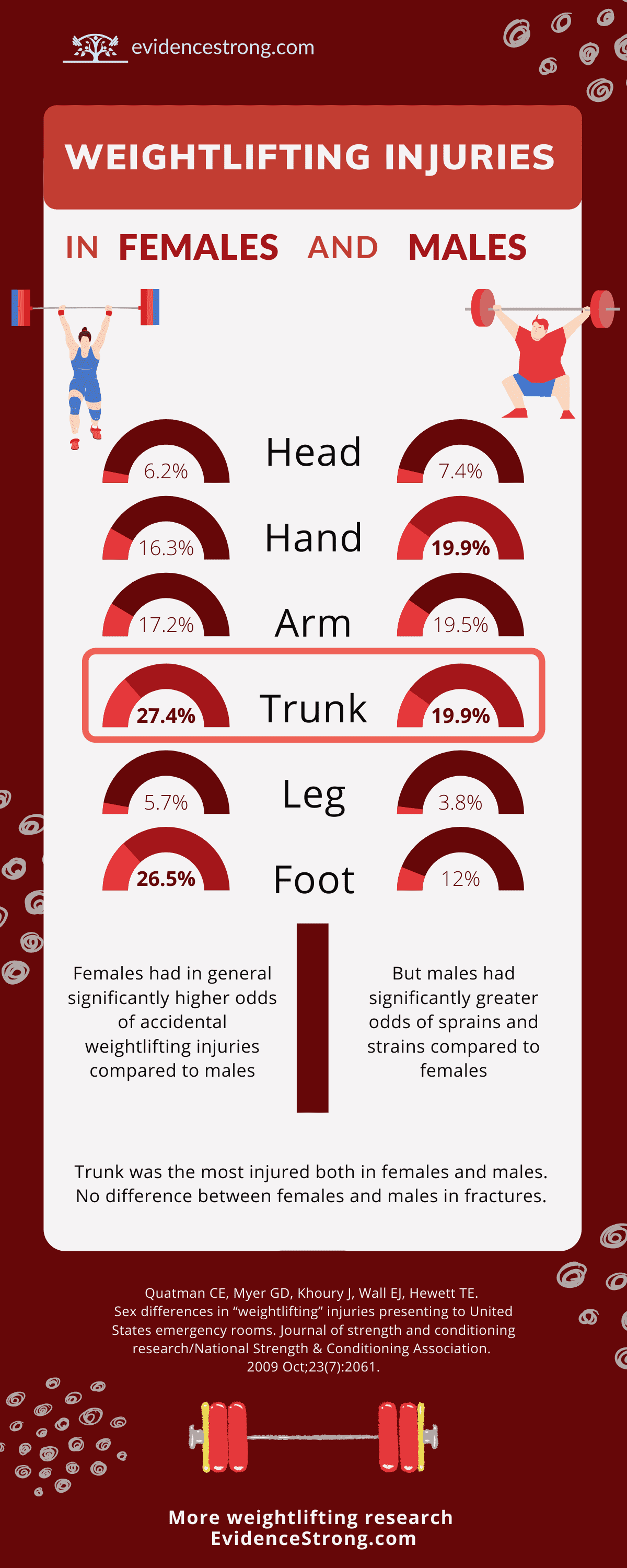Summary of an article comparing weightlifting-related injuries in the emergency departments in females and males.
Who
3,713 (611 females, 3,102 males) treated for “weightlifting-related” injries between 2002 and 2005 aged 14 - 30 years (USA).
Design
Data analysis of “weightlifting” injuries from the US Consumer Product Safety Commission (CPSC) National Electronic Injury Surveillance System (NEISS) from 2002-2005
Outcome measures/tests
- “weightlifting” injuries
Main results
- Females experienced 278 accidental weightlifting injuries (e.g., dropped weights, improper use of equipment, tripping over equipment) and males 977 accidental injuries. Females had significantly higher odds of accidental weightlifting injuries in general compared to males. But males had significantly greater odds of sprains and strains compared to females. No sex-differences in fractures.
- Trunk was the most commonly injured body part for both males and females.
- weightlifting injuries:Weightlifting injuriesHeadHandArmTrunkLegFootFemales [%]Weightlifting injuriesHead6.2Hand16.3Arm17.2Trunk27.4Leg5.7Foot26.5Males [%]Weightlifting injuriesHead7.4Hand19.9Arm19.5Trunk19.9Leg3.8Foot12.0
Take home message
For a clinician & coach
Trunk was the most injured region during weightlifting activities both in females and males. Females were more likely to have accidental injuries (e.g., dropped weights, improper use of equipment, tripping over equipment), but males were more likely to have strains or sprains. There was no difference in fractures.
For a parent
Trunk was the most injured region during weightlifting activities both in females and males. There was no difference in the fractures between females and males, but males were more likely to have strains or sprains.
For an athlete
Trunk was the most injured region during weightlifting activities both in females and males. There was no difference in the fractures between females and males, but males were more likely to have strains or sprains.
Original article
Quatman CE, Myer GD, Khoury J, Wall EJ, Hewett TE. Sex differences in “weightlifting” injuries presenting to United States emergency rooms. Journal of strength and conditioning research/National Strength & Conditioning Association. 2009 Oct;23(7):2061.
You might want to read next
Should you do CORE training before starting Olympic weightlifting?
